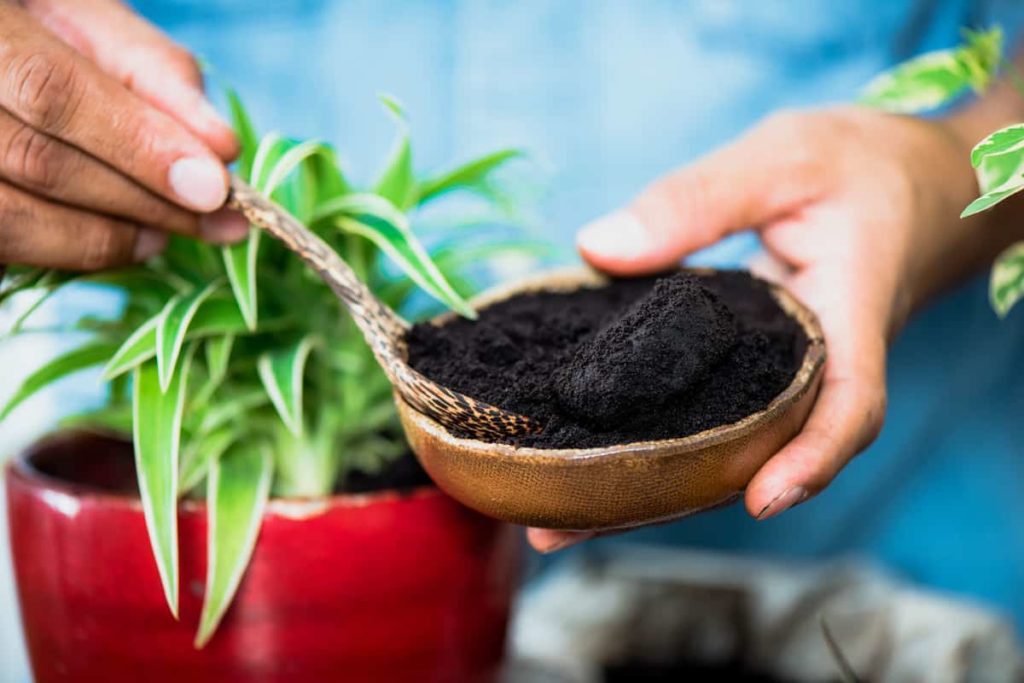
The internet is full of quick and easy gardening hacks that promise to make your plants as healthy and happy as possible.
Some are backed by science and solid gardening methodology, while others are myths and legends passed down for generations. Given the amount of conflicting information around, it can be hard to tell fact from fiction.
Coffee grounds are often recommended as one of these hacks, claiming to provide a range of benefits for houseplants. Some of the benefits have some truth to them, but they are not without their downsides.
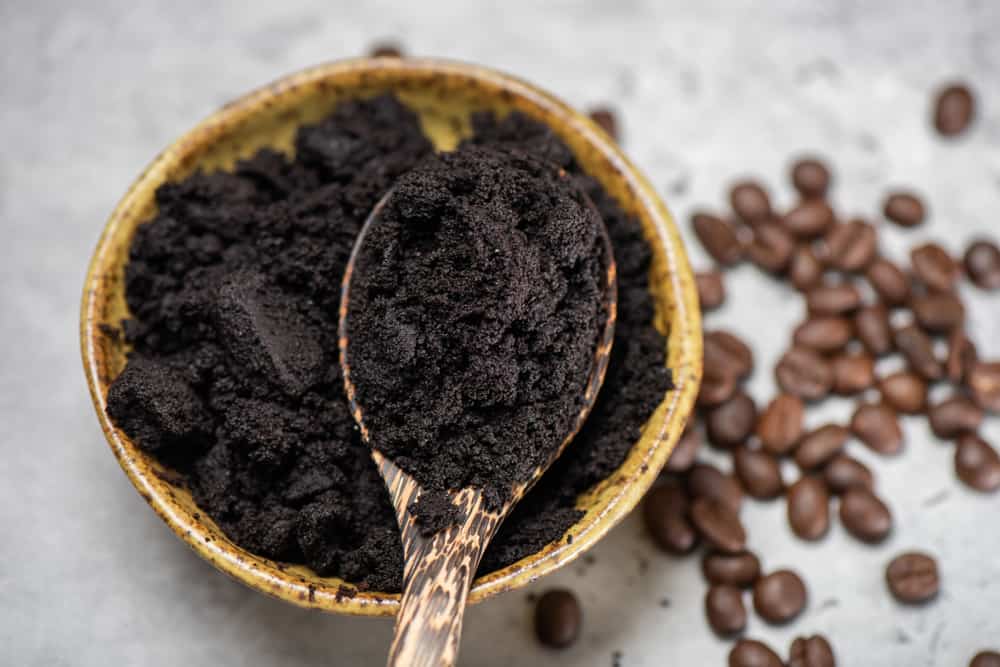
Take a look at these pros and cons of adding coffee grounds to houseplants to decide whether it’s right for you.
Pros
Contains Nitrogen
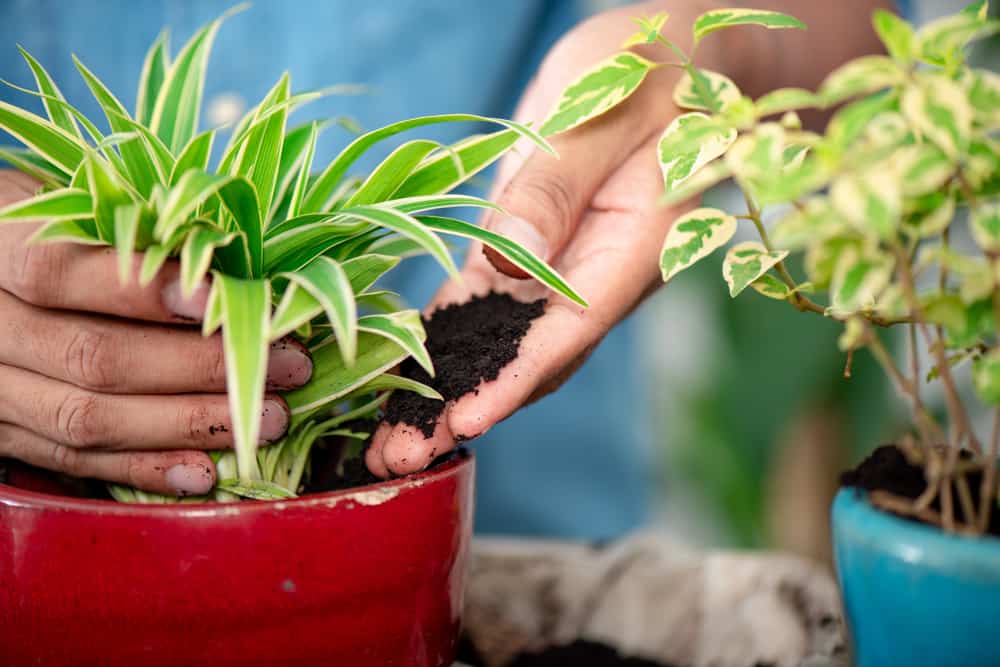
We all know plants require certain nutrients to grow and thrive. These are split into:
- Macronutrients, needed in the largest amounts;
- Secondary nutrients, needed in slightly lower amounts;
- And micronutrients, needed in very small amounts.
If you’ve taken a look at any fertilizer packaging, you’ll see the abbreviation NPK, the three essential macronutrients. The N stands for nitrogen, a nutrient that improves foliage and stem growth and gives leafy greens their dark color.
According to Oregon State University, coffee grounds contain around 2% nitrogen by volume. They also contain some phosphorus and potassium, but in small, almost negligible amounts.
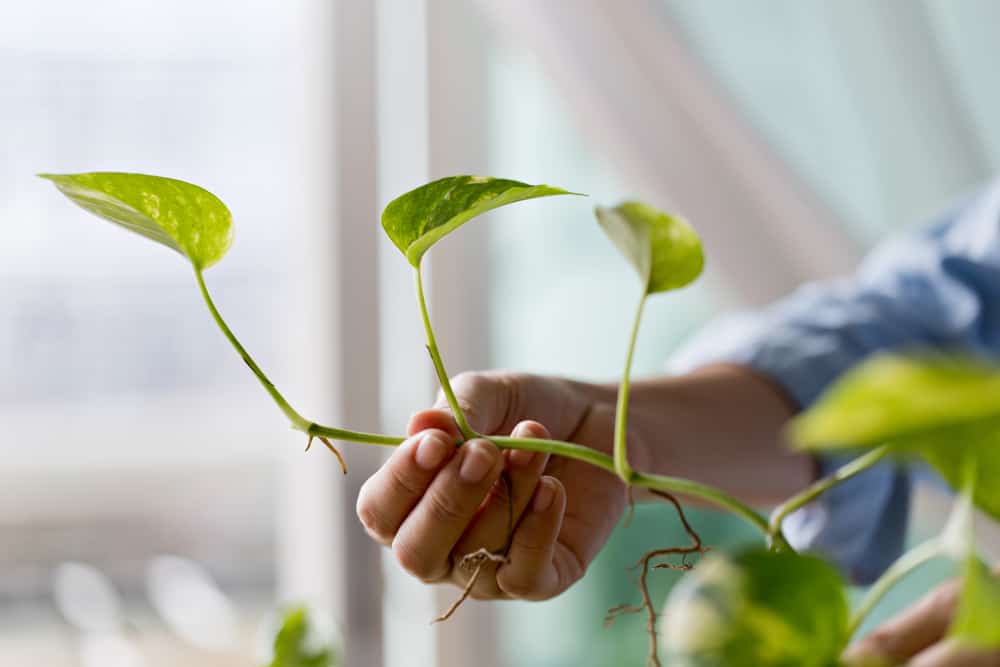
Houseplants are usually favored for their foliage. That means high levels of nitrogen in the soil are essential to maintaining their leafy lushness. Coffee grounds, when used correctly, can be a great source of nitrogen to help your houseplants grow quickly and maintain their lovely leaves.
However, there is a caveat.
Coffee grounds alone are not a sufficient nitrogen fertilizer. Studies have shown that the amount of grounds needed to act as fertilizer can actually inhibit growth.
Their nitrogen serves a better purpose in compost, where they can break down with other materials to make a stronger and more balanced source of nutrients for your houseplants.
Coffee Grounds Retain Moisture
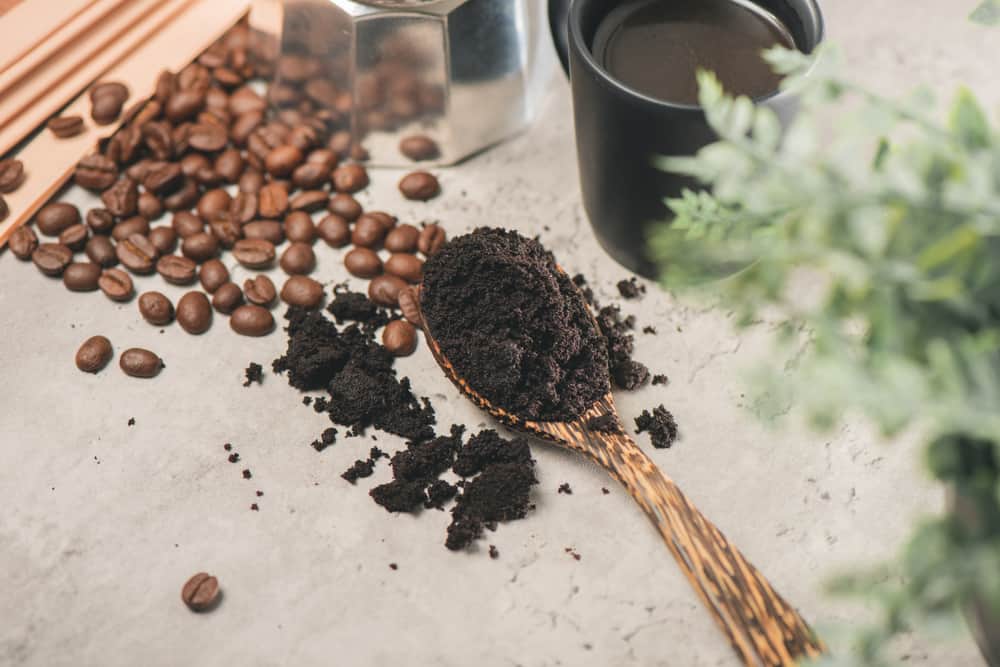
Peat moss is commonly recommended as a soil amendment for houseplants. It retains moisture and improves soil structure – important characteristics for plants in containers.
Unfortunately, peat moss is not a particularly sustainable material. There is some controversy surrounding its use as bog ecosystems are damaged by the process of harvesting.
That’s where coffee grounds come in.
Coffee grounds are a great alternative to peat moss as they have similar qualities. When coffee grounds are mixed into potting soil before planting, they retain moisture and improve soil structure.
They also encourage the growth of microorganisms, which improves soil quality and nutrient availability.
Mix a few handfuls of coffee grounds into your houseplant soil mix when potting or repotting to reap the benefits. Make sure you keep the plants well-watered afterward as the grounds become hydrophobic when left to dry out completely.
Environmentally Friendly
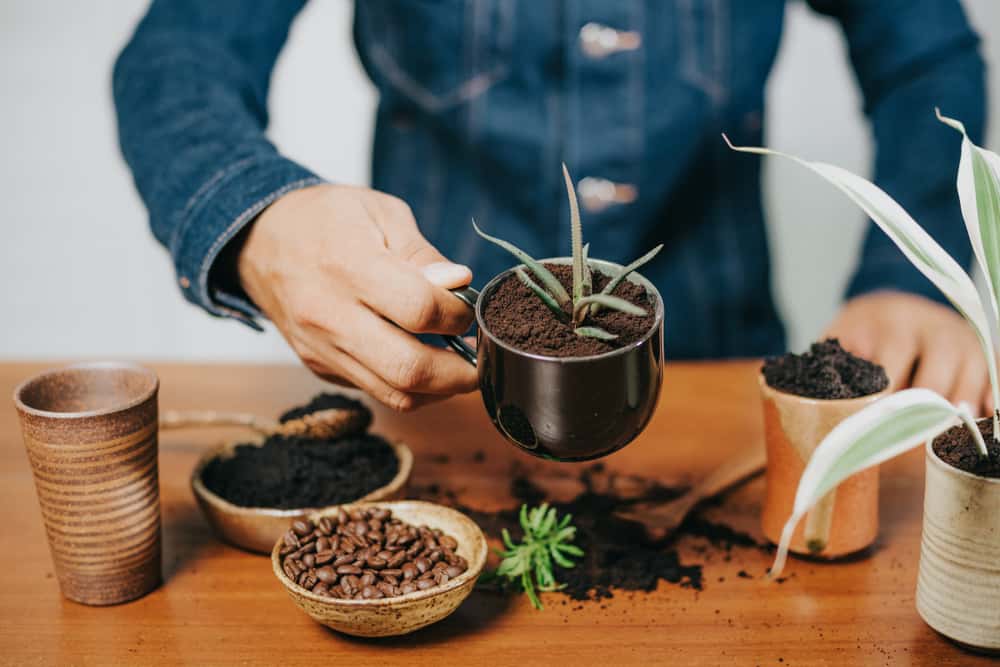
One of the ways to make your indoor garden more environmentally friendly is to reuse your coffee grounds either in your soil or in your compost.
That way, you will be making use of waste that would otherwise go in the trash, and you limit the purchasing of other products that serve the same purpose, but may not be as sustainable.
Cheap
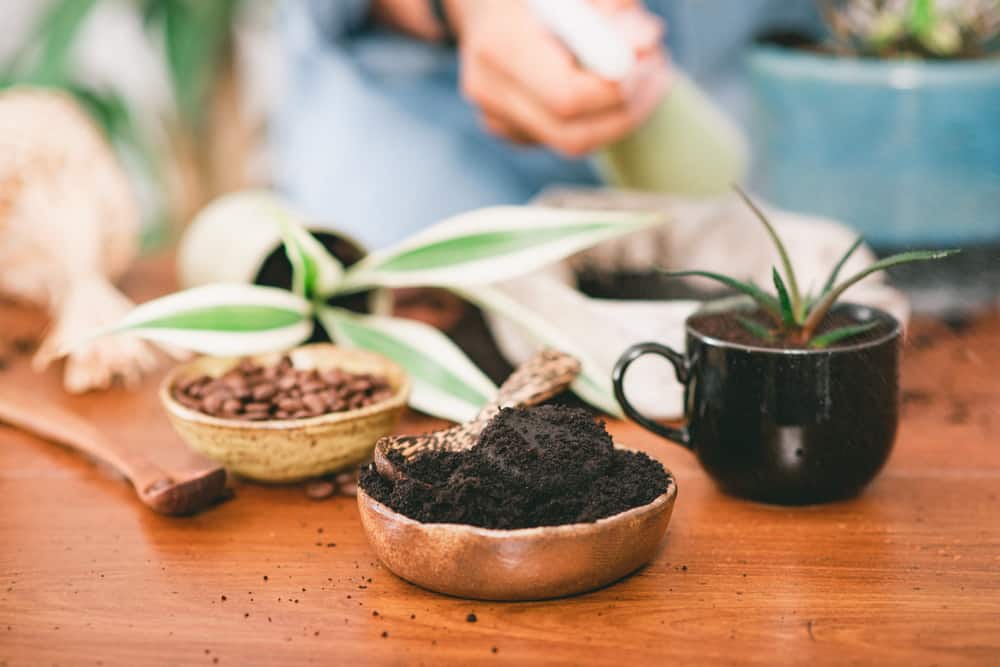
If you’re looking to garden indoors on a budget, look no further than your kitchen coffee corner.
If you already make coffee regularly, coffee grounds are abundant and completely free. You’re actually getting more value for your money by reusing grounds that would otherwise go to waste.
And, if you’re not a coffee lover, there are ways to get the grounds for free. Many coffee shops have areas where they leave their used grounds for avid gardeners to take at absolutely no cost.
As the volumes of coffee are far higher at stores than what you use at home, there is always a consistent supply. And, when it comes to houseplants, you don’t need many coffee grounds to have a big impact.
Great In Compost
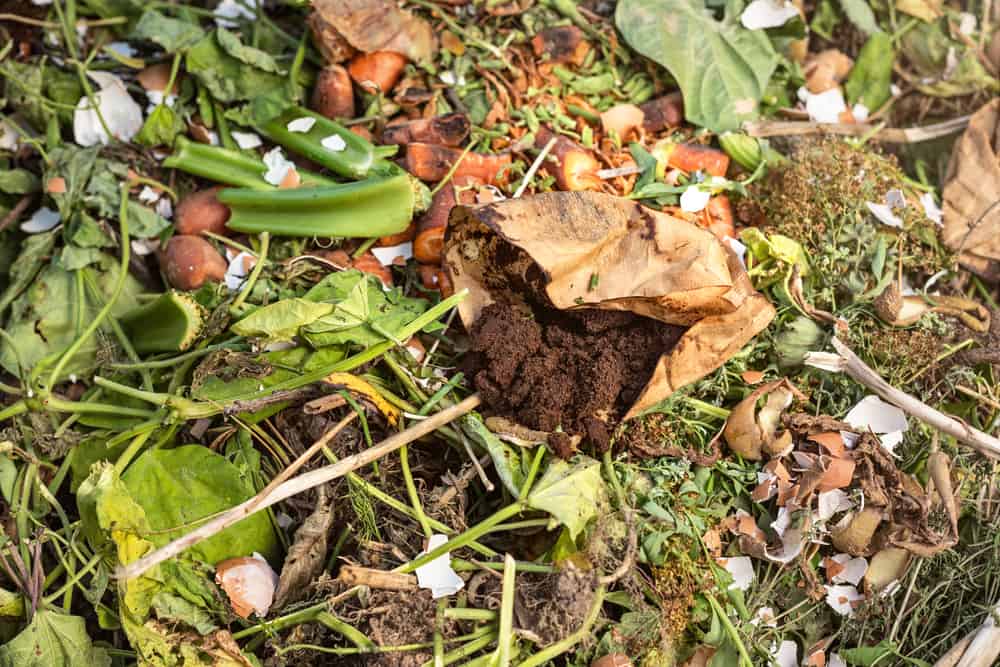
Thanks to the high levels of nitrogen and their ability to break down quickly, coffee grounds are a great addition to your compost.
Whether you have an indoor compost bucket in your kitchen or a large heap outdoors, throw your leftover grounds to add some nitrogen to the mix.
According to Oregan State University, coffee grounds have a carbon to nitrogen ratio of 20 to 1, very close to the 24 to 1 ratio needed to sustain microorganisms in compost. They also help with heat retention which speeds up decomposition.
Cons
Attracts Pests & Diseases
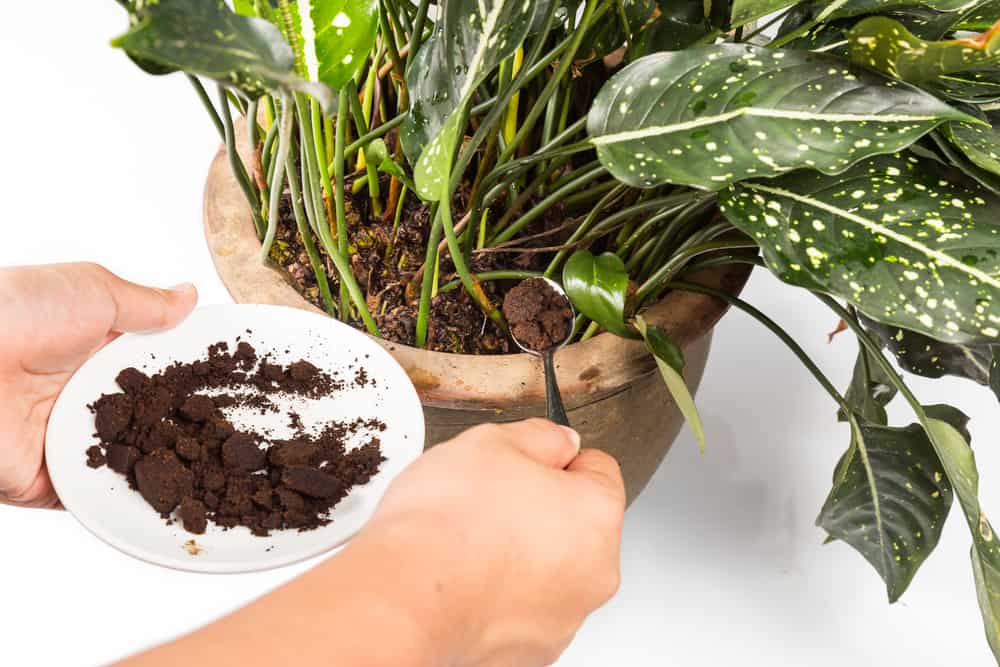
Coffee grounds are beloved for attracting good bugs and microorganisms to the soil. Unfortunately, that means they also attract bad bugs.
Coffee grounds mixed into the soil or used as a mulch can attract a wide range of common pests to your houseplants.
They provide a wonderful home for fungus gnats who reside in the soil. The moisture and humidity draw a number of other houseplant pests like thrips and mealybug too.
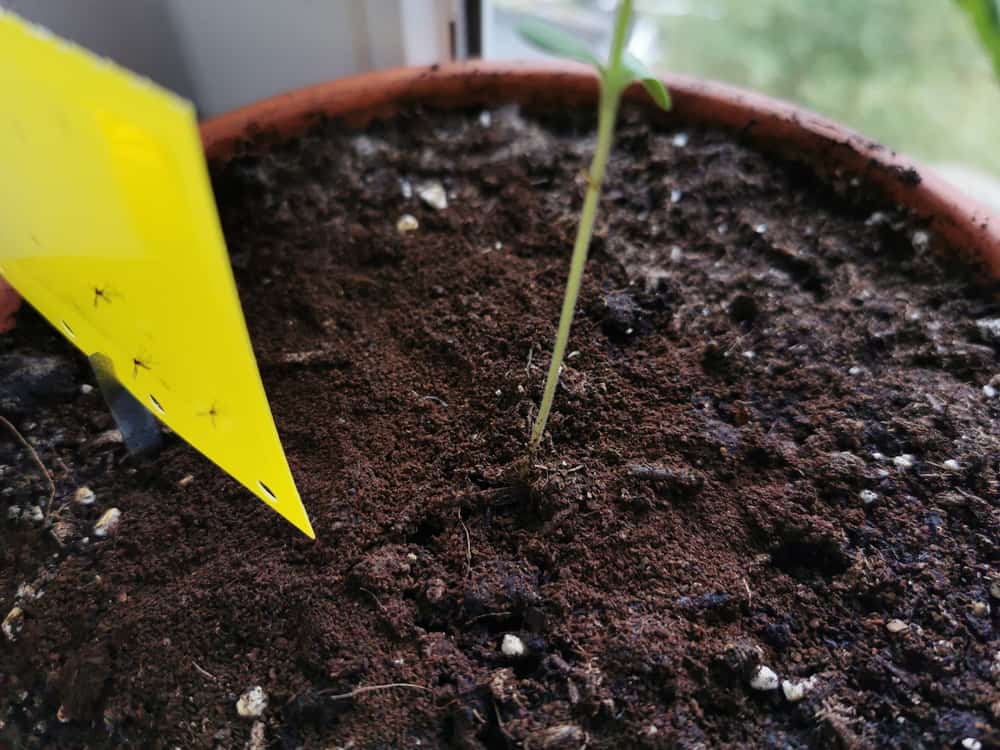
The moisture retention properties of coffee grounds are also known to encourage diseases, particularly fungal diseases that love the warm temperatures and high humidity most houseplants prefer.
If you choose to mix coffee grounds into the soil, keep an eye out for signs of a pest or disease problem. Make sure you address any issues immediately with an insecticidal spray, horticultural oil, or fungicide to prevent spreading.
Compacts Around Soil
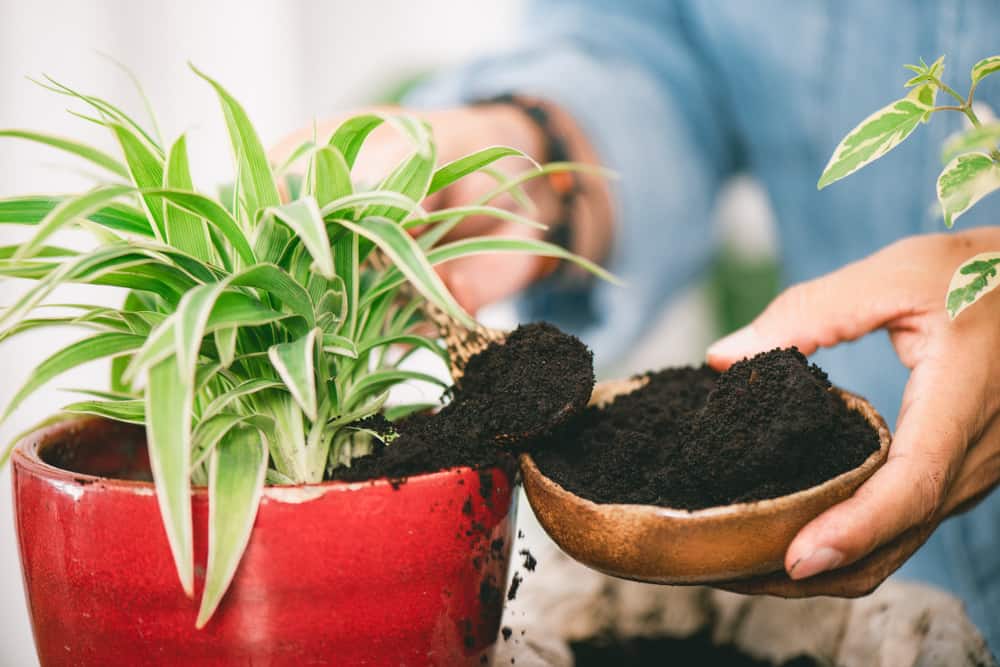
Coffee grounds retain a lot of moisture when wet. But, when they dry out, they become compacted and repel moisture. This is why dried coffee grounds from a coffee machine can turn into hard pucks that are difficult to break down or rehydrate again.
If you’ve added coffee grounds to your soil and tend to underwater your houseplants, it will be difficult to hydrate the soil completely. As the coffee grounds repel water, the water will run down the sides of the pot rather than into the soil, leaving the roots completely dry.
This is a massive problem when using grounds as mulch, as if often recommended. Once the coffee grounds on top of the soil have dried out, they will repel any water and stop it from reaching the roots.
You cannot keep the grounds consistently moist either, as this will result in root rot.
When using coffee grounds, you need to be diligent with your watering. Those who often underwater their plants or forget a watering or two should opt for another soil amendment or mulching material.
Can Inhibit Growth
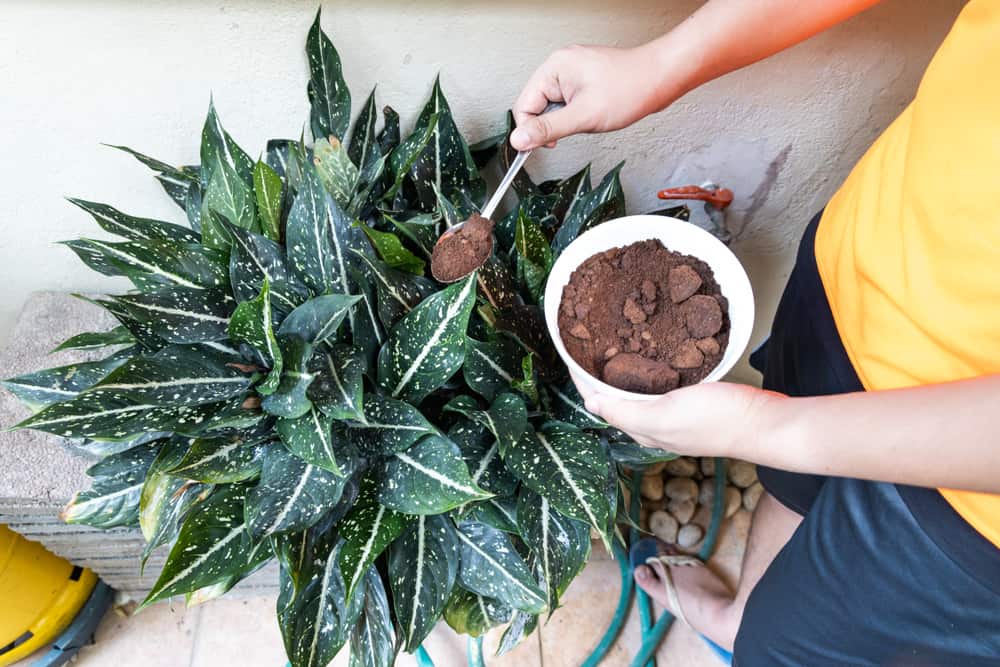
Several studies on the use of coffee grounds have delivered unfortunate results. Unfortunately, far from what many were expecting, the studies showed that high levels of coffee grounds used as mulch or in the soil can actually inhibit plant growth.
This phenomenon is thanks to the levels of caffeine in coffee. While some argue the caffeine is limited after use (down to about 20% of the original amount), used coffee grounds still contain caffeine amounts too high for houseplants to handle.
Root growth is inhibited and germination is affected. Some leaves may also begin to turn yellow and fall off the plant if caffeine levels are too high.
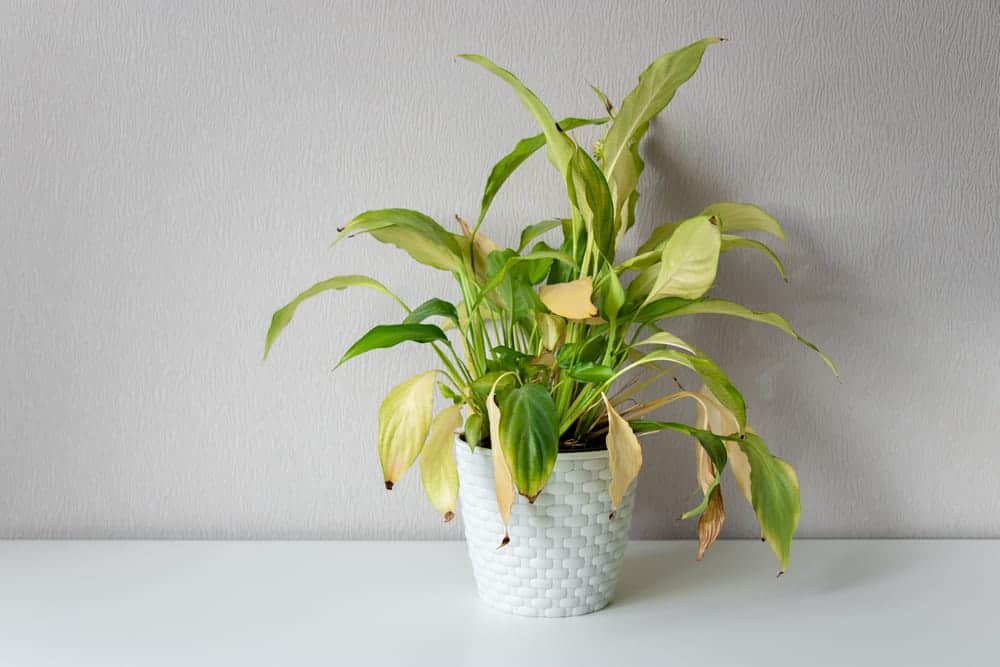
If you are set on using coffee grounds around your houseplants, the key is moderation. Don’t overdo it and amend your soil with a half ratio of coffee grounds as it will likely do more harm than good.
Use them sparingly, and never as a mulch, to prevent damage to your houseplants.
Can Lead To Root Rot
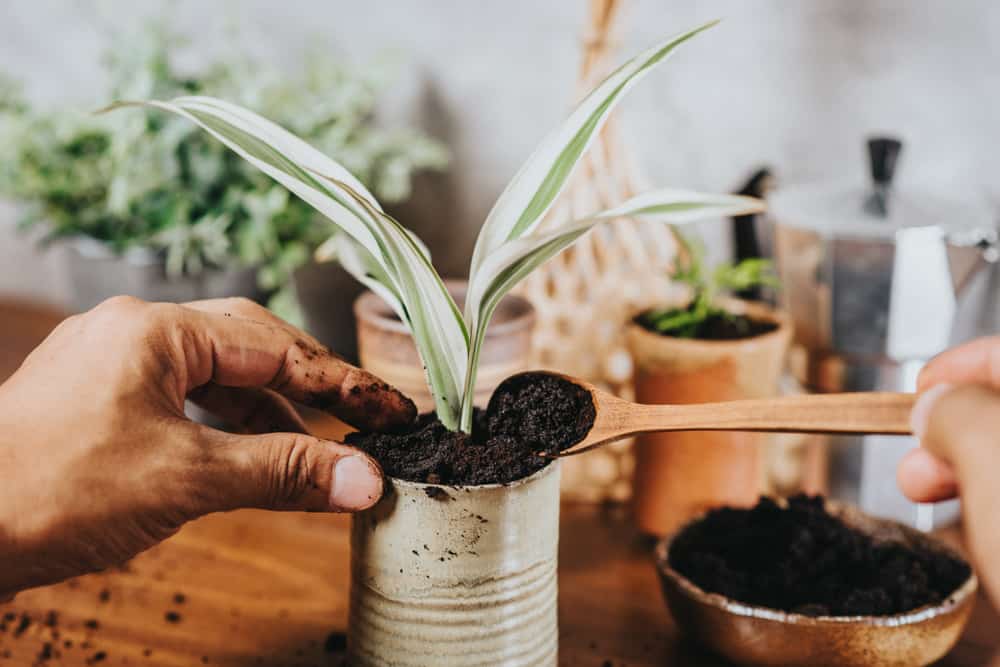
While coffee grounds can cause problems for gardeners known to underwater, they can also intensify cases of overwatering.
Overwatering is one of the most common causes of houseplant demise. Excessive moisture in the soil causes the roots to become mushy, unable to draw up any water and nutrients. This stunts growth and can ultimately kill the plant if left untreated.
As coffee grounds retain a lot of moisture, they can intensify problems with overwatering if kept moist for long periods. While moisture retention is usually a benefit, it can be a burden to those who overdo it.
To mitigate this risk, avoid watering on a schedule and test the soil moisture every few days. Most houseplants will need watering again when the top few inches of soil have dried out.
Alternatively, you can use a moisture meter to make sure you never under or over water again.
The jury is still out on the use of coffee grounds in indoor gardens. While there are clearly some benefits, there are also a lot of risks.
If you’re determined to make use of your used coffee grounds, make sure you do so in moderation. Keep an eye out for signs of overuse to avoid permanently damaging your houseplants.
